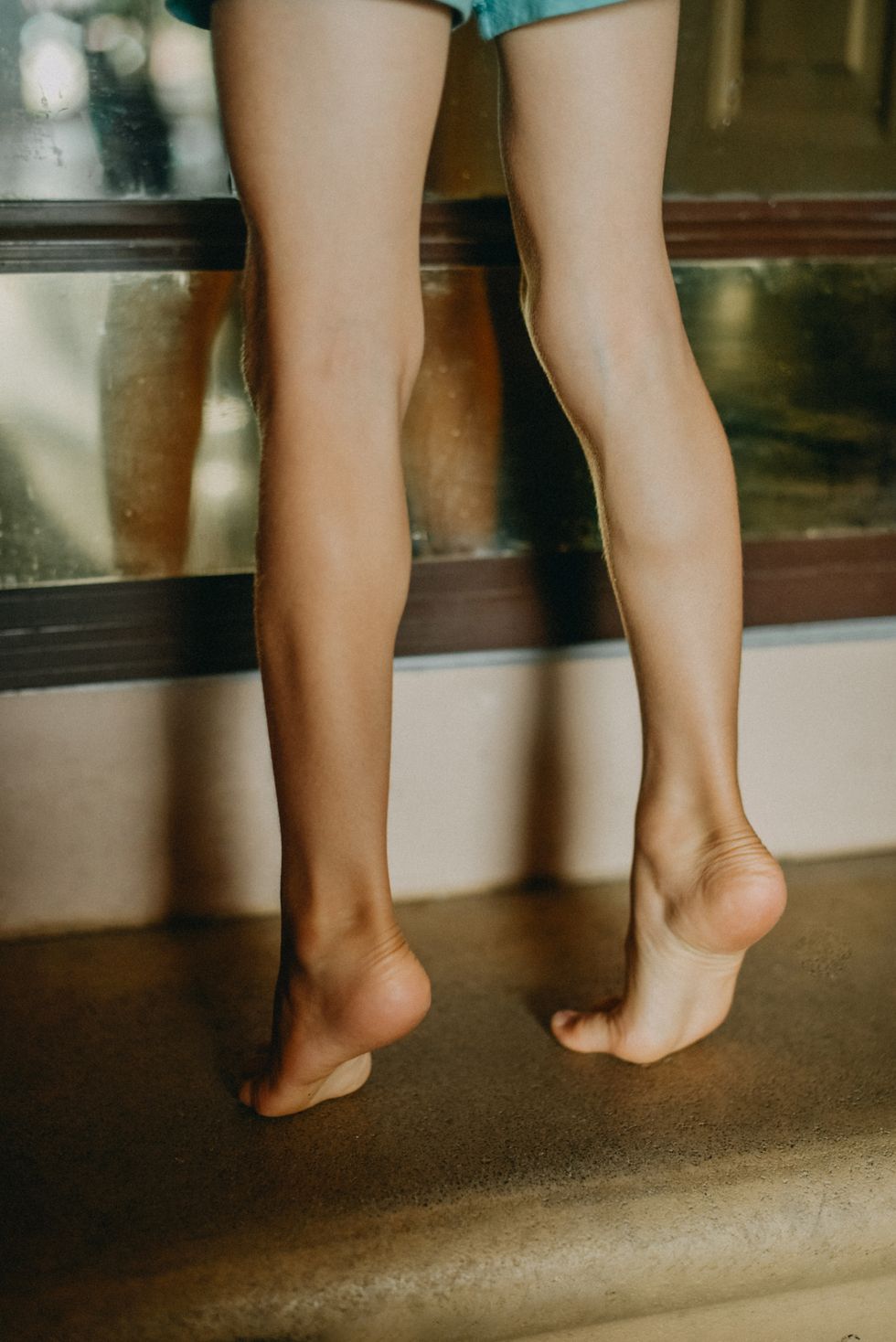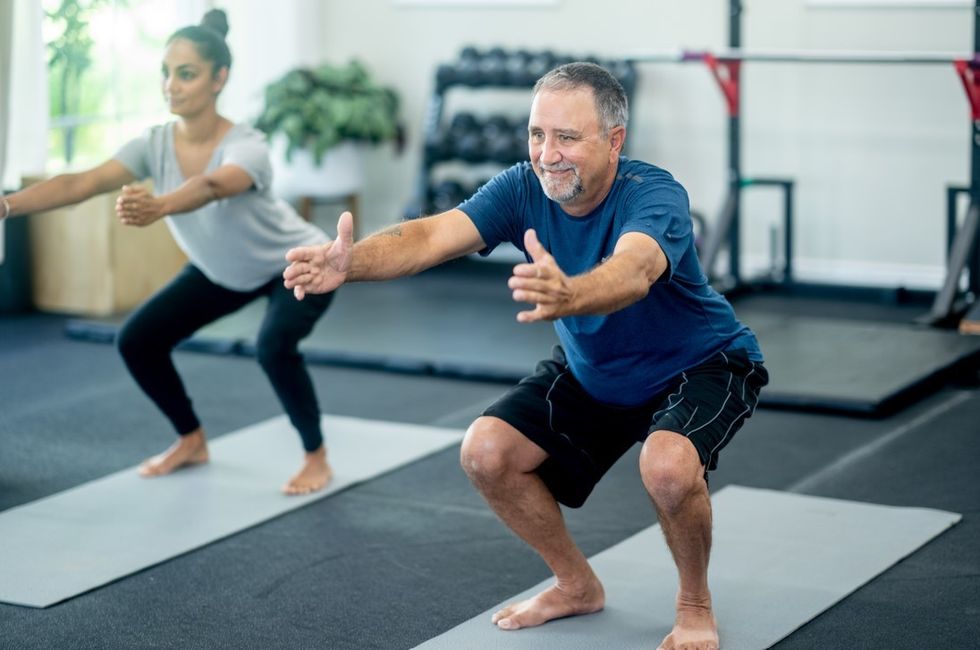Pilates can improve flexibility and strength
GETTY
GB News is giving you the best workout plans and diet advice to help you burn fat, tone muscles and transform your body. This week, we look at the best stretches and moves to improve flexibility and build strength in your 40s, 50s, 60s and beyond
Don't Miss
Most Read
Trending on GB News
Stretching exercises are often overlooked in favour of cardio and strength training, but they can be extremely important for improving flexibility and building strength.
GB News shares the moves you should add into your routine if over the age of 40, and why Pilates could be the workout plan to follow.
Best stretches
Pilates workouts and stretches are among the best for keeping the body in shape, said physiotherapist and the CEO of BodyTone Pilates Studio Calum Fraser.
He told GB News: "Maintaining strength and flexibility as we age is essential for general health and mobility. For people over 50, Pilates is a great low-impact form of exercise that emphasises flexibility and strength in the core.

Calf raises can be incorporated into your workout
GETTY"The main objectives of Pilates are to improve posture, regain mobility, build strength and flexibility and promote stability and balance—all of which gradually decline with age."
He shared two moves in particular that over 50s should incorporate into their routines. They can be performed at home or the gym.
Mermaid Side Stretch
The Mermaid Side Stretch is an excellent Pilates mat exercise that helps extend the body's sides and supports the health of the spine in older adults. This exercise primarily works the inner thighs, spine, shoulders and obliques.
Benefits
"Opening the sides of the body: This helps to protect the lungs and improves deep breathing by extending the muscles between the ribs and pelvis.
"Intervertebral disc hydration: Maintaining the hydration of these discs delays the rate at which wear and tear causes the vertebrae and spine to deteriorate.
"Lower back pain relief: Increasing ribcage mobility and oblique strength contribute to total core stability and the reduction of lower back pain."
Wall Angels
Wall Angels are intended to increase mobility in the upper body and they have a positive impact on shoulder health and posture.
Benefits
"Reducing back discomfort: It promotes appropriate upper body posture and mobility.
"Improving alignment and posture: Developing strength in the muscles surrounding the shoulders and upper back aids in maintaining proper posture.
"Improving the functioning of the shoulders: This workout engages the scapular muscles. Actively using the scapular muscles helps to maintain scapular stability, which is important for maintaining shoulder health and avoiding typical age-related shoulder problems."
Balanced Body education director at Balanced Body Joy Puleo also praised the benefits of Pilates and detailed a 20-minute workout for those who have more time for a session.
She told GB News: "This simple, 20-minute Pilates-inspired workout is designed to fight the negative effects of sitting, improve posture and balance, increase flexibility and circulation and enhance overall health and vitality. They can be done standing at your desk or in a small space."
20-minute Pilates plan
Heel raises
"From a tall standing posture, rise up onto the balls of your feet. As you lower your heels back to the ground, keep lengthening and reaching the crown of your head to the ceiling. In other words, as you lower your heels to the ground, imagine you are actually getting taller.
"This will, not only work your ankles and feet, but the postural muscles along your spine. Five to eight of these will leave you feeling grounded in your legs, taller and more upright."
Standing roll downs
"Take a moment to take stock while in your standing posture. Nod your head, then imagine rolling through your spine, one vertebra at a time.
"Roll down as far as comfortable and stop if you experience any back pain. As you roll down imagine drawing abdominals in and up to support the front of the spine.
"If the floor seems too far away, stand close to a desk and roll down until your hands find the support of the desk. Once the desk is achievable, try for something lower, such as a chair seat and, finally, the floor.
"To reverse, plant your feet firmly into the ground and start to roll up your spine. As you return to standing, imagine stacking one vertebra on top of the one below it. Three to five of these are plenty."
Leg stretches
"Keep these stretches dynamic by keeping movement continuous. Repeat as desired.
"Hamstrings (back of the thigh): From the roll down position, bend your knees and bring your thighs toward your chest, as close to your thighs as possible. From this position, straighten the legs while trying to keep the chest as close to the thighs as possible.
"Adductors (inner thigh): Open legs wider than hip-width and place hands on a counter, table or desk. Shift your weight to one leg by bending the knee. Keep the other leg straight - this leg should feel the stretch. Repeat on the other side."
LATEST DEVELOPMENTS

Squats are a good way to improve flexibility and build muscle
GETTY"Abductor (outside of the thigh): Stand sideways to the desk. For a deeper stretch, standing under a doorway is optimal. Stand with your side facing a table or doorframe. Cross your right leg in front of your left at the ankles.
"Place left hand on a table or hold onto a door jam. Side bend to the left. As you do so, your right arm can reach up and overhead. If inside of a door jam, hold the jam as you focus on stretching into the right hip."
Standing reach and extension
"Standing upright, open your arms out to the side, raise them overhead and reach for the ceiling while extending the spine. Release by lowering arms, bending knees and flexing spine. Repeat."
Squats and Lunges
"Fitness staples, these moves are excellent for building leg strength and strengthening the pelvic floor.
Squats
"Narrow: Stand with legs hip-width or slightly wider, feet parallel.
"Lower into a squat by bending at hips, knees and ankles. The spine remains straight as the torso tilts over the thighs. At the bottom of the squat, you should feel work in the quadriceps and hamstrings, and your weight should be balanced over your legs.
"Wide: Open legs wider than your hips and slightly turn them out. With a wider stance, you can lower it further down. Try 10 repetitions, then on the final repetition, hold position and count to 10 slowly. You can also pulse in a squat position. Try lifting heels as you pulse and wow, your quads are on fire."
Lunges
"Ten repetitions of each lunge in succession will create strength and muscular balance quickly."
Back leg focus
"Stagger your legs in a split stance, one forward and one behind. Keep the torso upright and the spine straight. Bend both knees and lower into a lunge. The back knee should be directly under the pelvis, creating a straight line from head to torso to knee.
"For support, place one hand on a desk as you lower into a lunge. Just that small amount of contact will allow you to lower deeper while providing control and balance."
Front leg focus
"Stand tall with your weight even on both legs. Take a step forward with one leg and bend your knee to lower into a lunge. The back leg remains straight and the body tilts forward over the lunging leg.
"From standing, step out to the side with your right leg while stepping behind with your left. Bend both knees and lower into a side-stepping lunge. Stand up to return to the starting position and reverse sides."
Countertop push-ups
"Place hands on top of a desk, and step back until the body is in one long diagonal line. Bend and straighten your arms. As your arms bend, the body lowers toward the desk, and as your arms straighten, the body returns to the starting position.
"Although your arms are working hard, your spinal muscles and core are working to support the spine, and legs should be active to support the lower body. Ten repetitions is all you need."
Looking for more fitness advice? See GB News' guide on the best 15-minute workout plan to burn fat. Or check out the best plan to tone your legs.








